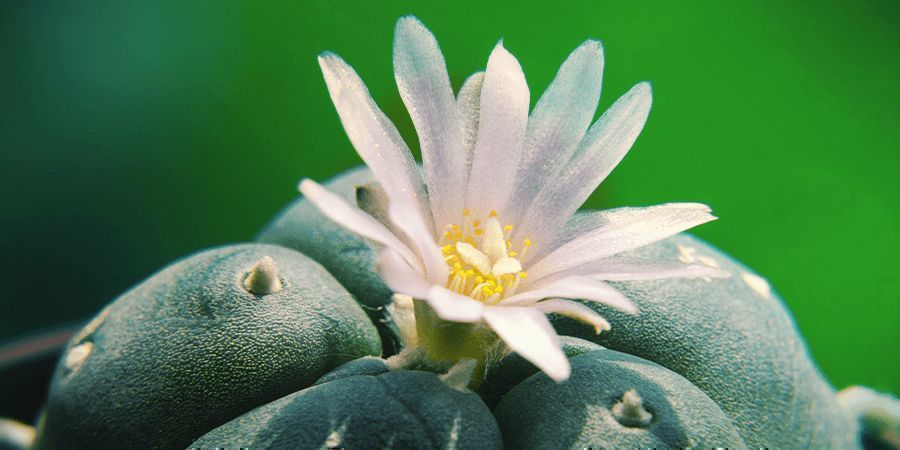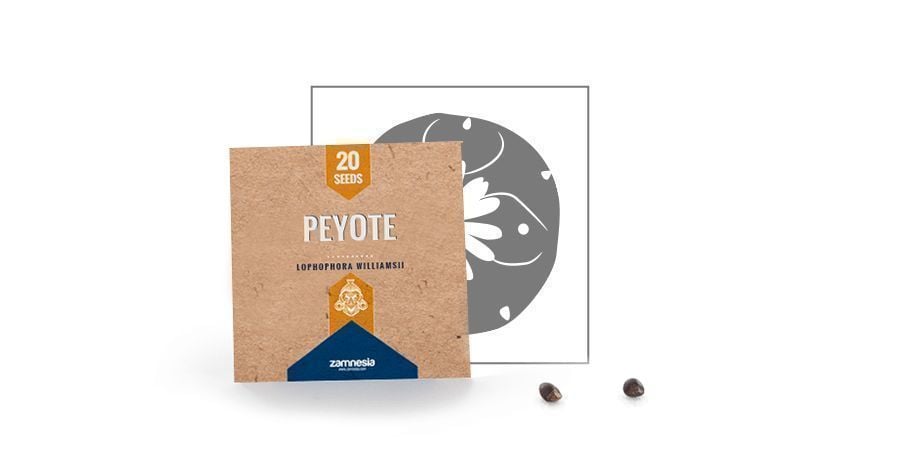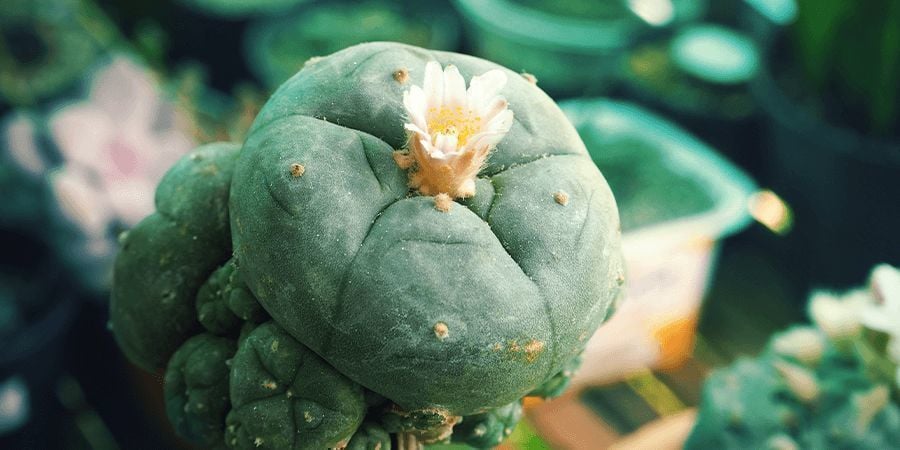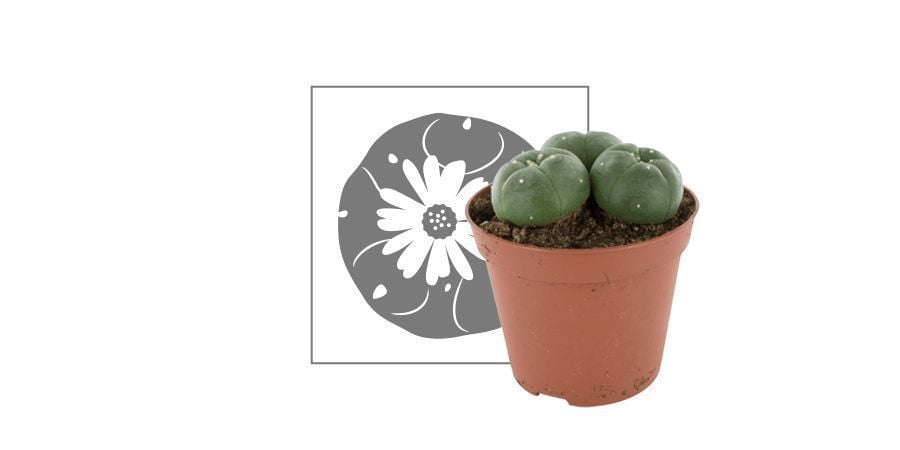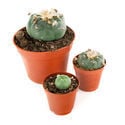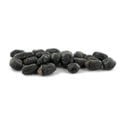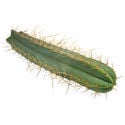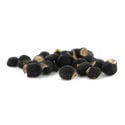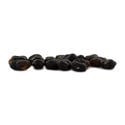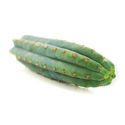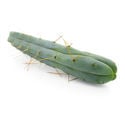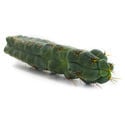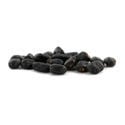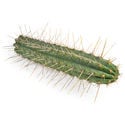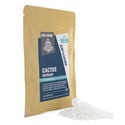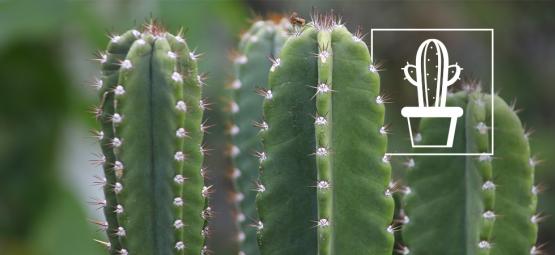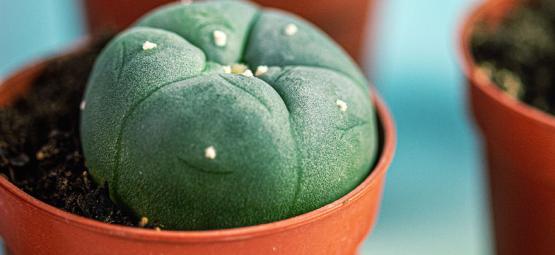Peyote (Lophophora Williamsii): Everything You Need To Know
.jpg)
The key ingredient to growing peyote is patience. Remember the Lophophora Williamsii is a cactus and cacti grow slowly. Peyote slower than most. Luckily indulgence from a fussy grower will speed growth rates up considerably faster than nature.
A native of Mexico and southwestern Texas, peyote thrives in harsh scrubby conditions with poor soil. Imitating these conditions as much as possible is the goal of the peyote gardener. Soil is easy as an ideal mix and can be custom made. Climate can be a challenge in cooler parts of the world and may mean using terrariums, greenhouses and heat mats. Peyote loves as much full sunlight as it can get to simulate its home in the rarefied elevated air of the Chihuahua desert.
WHAT IS PEYOTE?
Peyote is a small spine-free cactus that contains the psychotropic compound mescaline. The use of mescaline by indigenous American people can be traced back at least 5,500 years and possibly further.
Mescaline is a hallucinogen that can produce radically altered states of consciousness. Usually pleasurable and often illuminating with intense visual experiences that were an important part of shamanic and ritualistic use. Recreationally mescaline is non-addictive and has a built-in anti-addiction feature. If it is used more than four or five days in a row it just stops working. In the several weeks that follow the primary hallucinogenic experience, mescaline leaves an unobtrusive feeling of pleasant anxiety free optimism.
There are a number of subspecies that vary in colour, but they all share common characteristics. They are a squat bulbous species growing no taller than seven centimetres. They have flattened spherical buttons divided by prominent ribs that can grow to fifteen centimetres in diameter. Left to grow the buttons can form large coral like clumps. They do not have spines typical of cactus, but small slightly raised areolae that sprout a tuft of white fuzz.
Peyote flowers sporadically. A white or pink flower will emerge rapidly. Turning from a small imperfection in the skin to a pod and then flower in a matter of days. When fertilised the flower closes then dries and in time is replaced with an elongated pink fruit. When left the fruit dries to resemble a reddish seed pod. Inside the flat black seeds are ready to become new peyote cactus.
The spherical buttons or crowns are harvested by cleanly cutting the sphere at the base where it meets the root body. The wound will callous over and form a scar from which a new button will shoot. They are then dried. Drying boosts the mescaline content from less than 1% to 3-6%.
HOW TO GERMINATE PEYOTE SEEDS
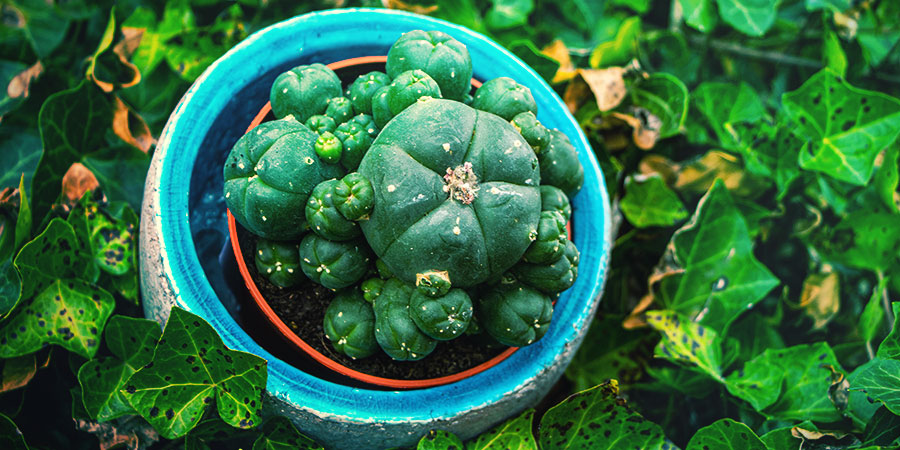
The best time to start your peyote seeds is early spring. First thing is to make a peyote friendly soil mix. Peyote patches are often found in the best condition in nature where there are limestone and very coarse, even stony, soil. Commercial cactus and succulent mixes take all the hassle out of making a cactus soil mix and will grow peyote very well. If you want a coarser textured mix use one part sand, one part heavy grit and one part standard potting mix.
Fill your pots with soil mix and tamp well, leave room at the top for easy watering. Thoroughly soak the soil and leave pots to stand for a day in the shade to drain thoroughly. Now you are ready for the seeds. Simply lay the seeds on the surface of the soil there is no need to cover them. In nature, they just fall to the hard ground and fare quite well.
Cover the pots with a piece of clear plastic and fix with tape or elastic bands. Don't use clear sandwich wrap it isn't strong enough for what follows. Ideal soil temperature for happy peyote is 22 Celsius. It will be very happy on a south facing window sill or ideally on the floor in full sun beside a heating vent. Heating mats are ideal and inexpensive to run. They give precise temperatures and you don't run the risk of burning down your house by using an electric blanket.
This type of humidity might seem strange for a desert species, but they do respond well. They will not need to be watered at all in these early stages. After two or three weeks small green spheres will appear where there were seeds. These are the infant peyotes. After four weeks prick a few small holes in the plastic, it is time to start dehumidifying and hardening off.
After a week add a few more holes. Then, a week later make the holes bigger. Over an eight to ten week period, the plastic will be so riddled that humidity is equalised. Be very careful these babies are still delicate. Remove the plastic and once the top layer of earth gets dry gently water them. Peyote like to keep their feet dry, so try not to over water as root rot will certainly set in. Using an atomiser to mist the top layer until damp is ideal.
TAKING CARE OF PEYOTE
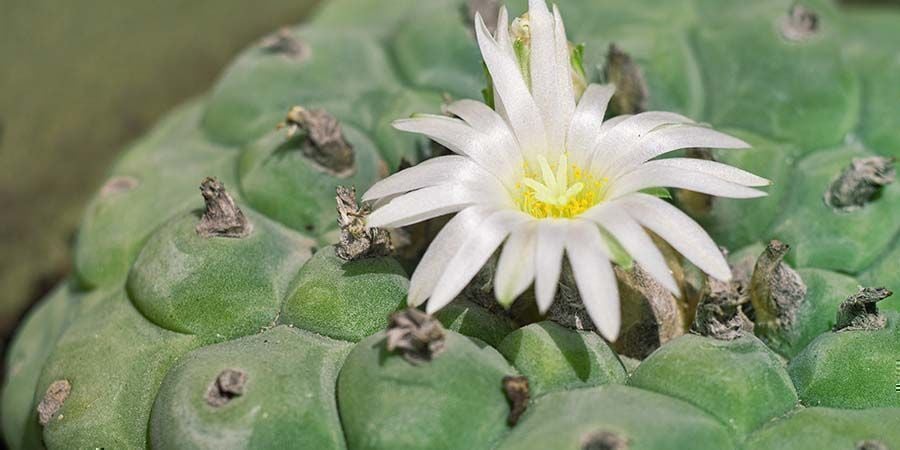
The little plants are still vulnerable. It will be months before a root system is established enough for the plant to withstand any knocks. Now comes the renowned patience of the succulent grower.
For the first two years keeping the soil warm will accelerate the growth of the young peyotes. They soon go from infant green to their specific colour and become flattened in the well-known peyote shape. Only water the young plants occasionally, they naturally go for long times without water. Don't water the plants at all from mid-autumn until the end of winter to avoid root rot. As spring warms begin the occasional watering again. You may have to soak the pots in a bucket the first time as extremely dry soil becomes hydrophobic.
After the first year, there is enough root development to pot on each of the baby peyote plants. In spring as the weather warms give each plant their own pot. Press the soil mix firmly around the young plants before watering in well. Make sure the green parts of the plant are above the soil line. The cactus body can rot.
Now that you have well-established plants they will like it hot. Desert hot. In the northern hemisphere above 30 degrees, latitude peyote will withstand a greenhouse all the year round. An upturned fish tank makes a good terrarium as does the humble PET bottle with the bottom cut out. Simply give each pot or each plant in a big pot their own greenhouse. Plants will withstand four or five degrees Celsius in winter without much trouble and fifty degrees Celsius in summer.
Every two years add a layer of fresh soil or a cactus-specific fertiliser. Always add fertiliser at half the recommended dosage. Peyote can swell and burst if overfertilized. This doesn't kill the plant but can slow growth while the wound heals. A chunk of limestone in the pot is decorative and mimics the peyotes home country with trace elements and minerals.
WHAT IS GRAFTING?
Grafting peyote onto faster growing species like Trichocereus can increase growth rates. The process is not difficult, just be clean. Cutting a peyote button reveals a ring of fibrous material. This ring contains all the capillaries that the plant uses to transport water and nutrients. Cutting the tip from a trichocerus reveals a similar ring that performs the same function.
Ideally, these two rings will be the same size, but this is never guaranteed and depends on the size of the plants you have available. Place the cut face of the peyote flat against the cut tip of the trichocerus. Make sure that the fibrous rings fit perfectly together. If the ring sizes are different make sure that they overlap twice.
The peyote graft then needs to be held firmly in place. Use elastic bands to stretch over the button and hook onto the trichocerus spines. A scar will form quickly and the peyote graft will soon start feeding on the surrogate plant.
When making a new peyote plant. Slice the selected button from the main body with a clean sharp knife. Set the button aside in a warm dry place until a scab has formed over the cut. At this point place the cutting scar down in a pot of tightly packed cactus mix. When left undisturbed a new plant will have well rooted in sixth months.
History: Ritual Use Of Peyote
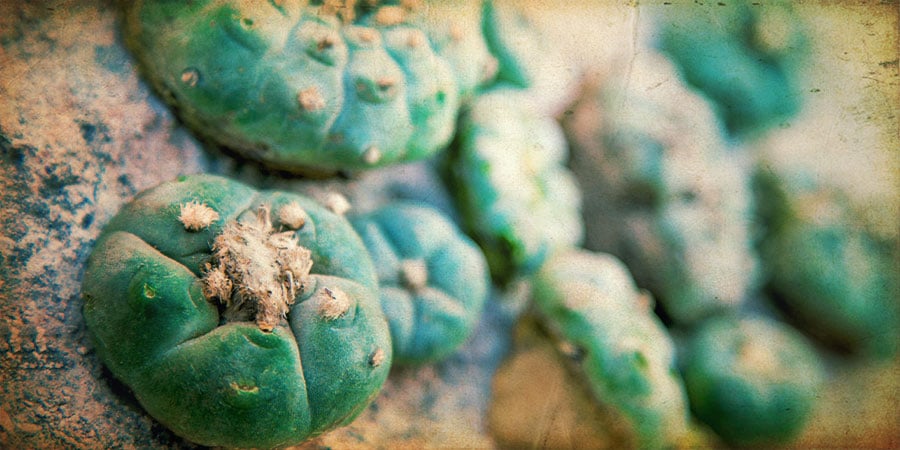
The small cactus Lophophora williamsii - or better known as peyote - has found widespread use among American Indian traditions. The Kiowa tribe is of particular interest due to their early adoption of peyote as a ceremonial sacrament and their role in propagating the plant among other tribal groups.
It is generally accepted that the Kiowa1 people migrated from the northern plains to the southern plains, before they got eventually relocated to their reservation in southwestern Oklahoma in 1867. Before relocation, the Kiowa lived mainly from buffalo hunting and followed the animal herds. As hunters and gatherers, they were famous and feared for the long distance raids that ranged from Mexico to Canada.
Origins of peyote use
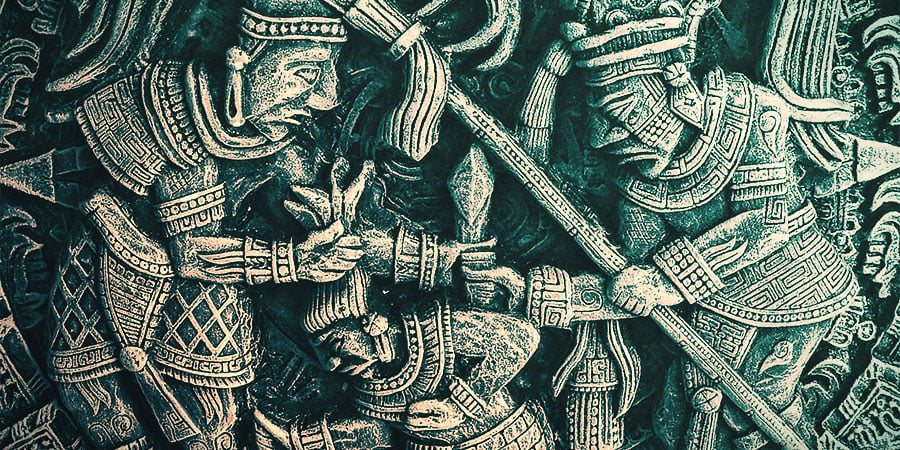
Due to the limited natural habitat of the peyote cactus, the Southwestern and Mexican tribes learned first about its use. Peyote is native to a relatively small region in southern Texas and northern to central regions of Mexico. Numerous southwestern Indian tribes knew the plant and knew it by different names: among the Kiowa it was seni; among the Comanche, wokoni; with the Mescalero, ho; and with the Tarahumara, hikori.
It must be noted that there has always been very active cultural exchange between tribes. Be it for raiding, hunting, trading or territorial exploration - there was always intertribal exchange of information. The three tribes living in the natural habitat of peyote have passed on the knowledge of the plant, so there were eventually six tribes - the Carrizo, the Lipan, the Lipan Apache, the Mescalero, the Tonkawa, the Karankawa, and the Caddo - that are known to have used the cactus ceremonially. According to Omer Stewart, “It is within these six tribes, [...] that we should find the origin of the peyote ceremony of the United States. These are the tribes in or nearest the growth area at the beginning of the nineteenth century. All were familiar with the ritual use of peyote.”
There is evidence that many of these tribes, particularly the Mescalero, have known peyote for decades. For at least a century they had occupied lands or raided into them. There are written records of peyote rituals by the Carrizo tribe dating back to 1649 - involving an all-night ceremony, singing and drumming around a circle.
The Oklahoma era

As Oklahoma became part of the designated Indian territory that followed the Indian removal act of 1830, numerous tribes were relocated to these lands - among them, the Kiowa. By 1874, the '"wild Indians of the Plains", or what was left of them, had joined the civilized tribes in Oklahoma. Peyote would have been known to many of these tribes.
Once peyotism reached Oklahoma, the ceremony transformed significantly from its origins in Mexico. In the words of Stewart:
“The peyote ceremony in Oklahoma was different from earlier Mexican peyote ceremonies. There was no blood-letting; there was almost never any dancing; people sat as in a meeting; there were no drunken stupors. It was an affair of family and friends, with singing and praying, and for all its strangeness to outsiders, to its participants it carried a high moral tone, such as might characterize a mission service.
While no Christian symbol, with the possible exception of the cross, can be found in early peyote ceremonies, they might be said to have had a Christian ambience [...] It was the civilized manifestation of the aboriginal ceremonies that were integrated in the Oklahoma ceremony and not the primitive, uncivilized aspects”
It was in Oklahoma, where the seeds for the Native American Church2 were planted. At first, it was difficult to obtain enough of the sacrament, since they were living far away from its natural growth habitat. And gathering peyote in Texas was very risky, because at that time no Indian were allowed in Texas. However, through courageous excursions to Texas, eventually a steady supply of peyote was established.
In the 1880, life on the reservations became more stable and peyotism spread rapidly. Its use quickly became apparent to missionaries and Indian agents of the U.S. government, who sought to suppress peyotism. After a long struggle to maintain its legality, eventually the Native American Church was founded in 1918. And the Kiowa were apparently the most active proponents of the new religion.
The Native American Church
The efforts to practice peyotism legally and unrestrained eventually resulted in the foundation of the Native American Church. Members of the church nowadays enjoy legal protection and the liberty to freely pursue peyotism. Particularly, the American Indian Religious Freedom Act of 1978 declared the use, possession and transportation of peyote for the "bona fide traditional ceremonial purposes in connection with the practice of a traditional Indian religion" as lawful. Today, it is estimated that the church counts more than 300,000 members, and membership is usually reserved for descendants of native tribes.
The Peyote Ceremony

Let‘s look at the structure of a typical Kiowa peyote meeting. The information is derived from the observations and recollection of Omer Stewart, who participated in numerous ceremonies of the Kiowa and other tribes. Throughout the United States and Canada, there are two distinct ritual variations - the Cross Fire and Half Moon ritual.
Many of the differences between the two styles are related to smoking. Besides not using tobacco in the peyote meeting, the Cross Fire ritual is distinctive by greater reference to the Bible, by displaying the Bible in the peyote meeting, and by ending the all-night ceremony with a sermon based on a text taken from the Bible.
However, there is a rule that the leader of the ceremony - also called the peyote chief or roadman - “is free to conduct the meeting as he wishes, allowing for minor variations. Nevertheless, nearly all rituals fit into either the Half Moon or Cross Fire pattern.”
Preparation For the ritual
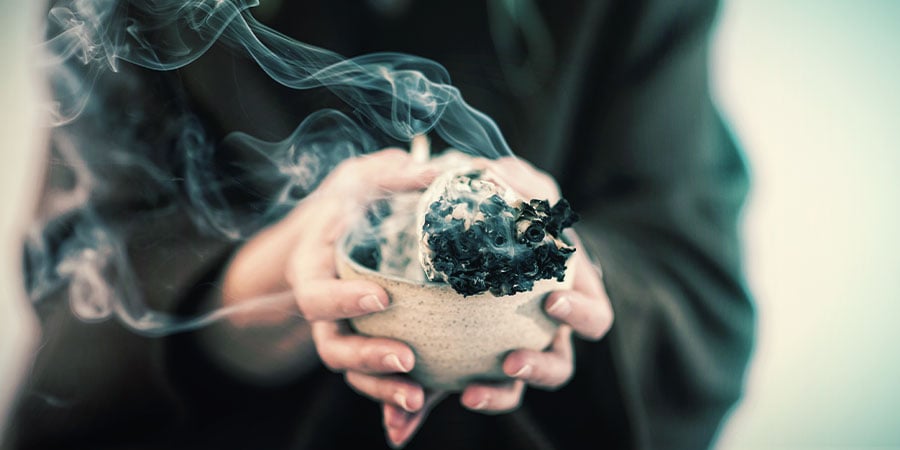
Between 7-8pm the participants meet in either a house, a hogan or a Tipi. The meetings are never held in the open. Preferably, all participants wear a traditional indian dress and have taken a bath before attending. There are no other preliminary preparations like fasting or sweating. The last supper is taken on regular hours. The ceremonial space has been set up by the leader and host of the meeting, who is in charge of the ritual. He set up an altar and provided sacred objects, such as a father peyote , the instruments and the staff. The crucifix is usually displayed on meetings.
The fire chief is responsible for the central fire in the tipi, which has been ignited before the ceremony starts. It is his responsibility to keep the fire going and say prayers. He is also responsible for conducting people in and out of the ceremony. As participants enter the sacred space, there is a specific order of entering. In that order enter first the chief, the chief drummer, the cedar man, all men, all women and children, and lastly, the fire chief. There is a circular seating order, separating men and women. Women usually sit behind the men. The men generally sit near the rear and the women near the entrance. On each side of the leader sits an assistant. There are at least two assistants, but also four or more.
As everyone is seated, usually on a blanket, the ceremony starts with a prayer or speech, or both. The cedar man is sitting to the left from the leader. The Kiowa use tobacco, as provided by the leader. The tobacco is rolled into cigarettes using maize husks and oak leaves. The cigarettes are then passed around clockwise and smoked along with leaders prayers. The smoke is blown towards the altar.
Along with the tobacco, sage bunches are passed around clockwise as wise. But they are not burned; they are rubbed in the hands and chewed. After the speech and prayer the chief lays out the paraphernalia on the ground between the leader and the altar. At that time the first cedar is thrown into the fire. The peyote buttons are now incensed before being passed around clockwise. Each participant takes 4 buttons to start out. Each button gets chewed, then spit into the hands, rolled, offered to altar and then swallowed.
Ceremonial Peyote Music
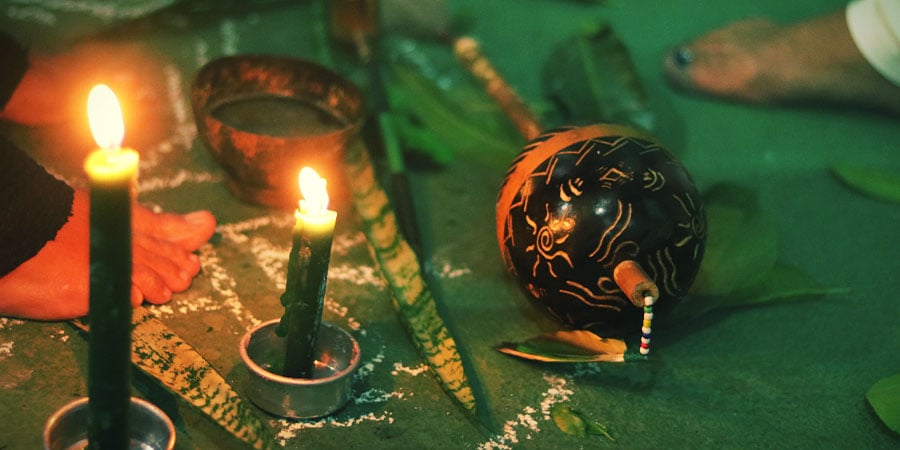
Music is the central activity in peyote ceremonies and consists of singing and drumming. It has to be noted that as peyotism has developed into an intertribal activity, the ceremonies and the music are very similar between the traditions. Songs are passed form one tribe to another. There are particularly four songs - the “Opening Song", the "Night Water Song", the "Morning Sunrise Song", and the "Closing Song” - that can be heard among different tribes, among them the Kiowa.
In Kiowa ceremonies the instruments used are a water drum and a gourd rattle, in addition to the voice. The water drum is able to produce an organic sound with variable pitch through the movement of water in the body of the drum. The water drum is filled with water and tied anew before each ceremony.
Once everyone has ingested the sacrament, the music commences. The music during the ceremony follows a fixed procedure. There is a “staff of authority”, a cane stick of 3-5 feet length, beautifully decorated, that is being passed around and the person holding it leads the singing. Along with the staff a decorated gourd rattle and an eagle feather fan is being passed to the same person. The song leader also shakes that rattle.
The leader begins the singing with four fixed opening songs and holds the staff in front of him. The chief drummer accompanies him. After the four opening songs the water drum, the rattle, the staff and the fan are passed around clockwise. Each man in the circle is expected to sing four songs, and each song is repeated four times. The man sitting right to him is playing the accompaniment on the water drum. “The singer holds the staff in his left hand and accompanies himself with the rattle in his right hand.” Traditionally, women do neither sing nor drum. The drumming and singing goes all night, except for pause during the midnight water call.
General Characteristics of peyote music
In the book “Peyote Music” David McAllester lists seven general characteristics of peyote music thats sets it apart from other tribal music:
- The songs are sung with a relatively 'mild' vocal technique.
- They are fast.
- The accompaniment is in eighth-note units running even with the voice and adding to the impression of speed.
- They are uniquely consistent in the use of only eighth and quarter-note values in the vocal melody.
- They have the usual plains phrase patterns but in addition show a significant incidence in paired patterns, restricted compass and unusually long and flat codas.
- The finals show a cumulative use of the tonic for phrase endings.
- At the end of the typical peyote song, as diagnostic as the Christian 'amen,' comes the phrase “he ne neyo wa”.
The old and new style
There is a basic distinction between “old style” and “new style” peyote songs. The old style songs are traditional peyote songs as they have been performed for decades and passed down from one generation to the next.
New style songs are newly written compositions and have developed only in recent years. They are often electronically enhanced, particularly with reverb, harmonization and electronic instruments. The Native American Churchis putting emphasis on creating new songs, so everyone is encouraged write new songs. As a consequence there are now hundreds of new peyote songs available.
The water calls
Water cannot be drunk by anyone at anytime, so there are two dedicated rituals for drinking - the water calls. They occurs twice, once at midnight and once in the morning. There is a special eagle wing bone whistle used only for the water calls. Only the leader plays the whistle. The water ritual follows a strict structure: the leader recalls the drum, staff, rattle, and other objects passed out. The fire chief replenishes the fire and puts four sticks of cedar on the fire. He also carefully cleans the altar and the floor. The leader then brings in a bucket of water and sings fixed water songs that bless the water. Once the water has been blessed, he spills some water on ground and then passes the bucket around clockwise so that everyone can drink.
As the ceremony continues, the roadman lays out the paraphernalia on the ground again and leaves the tipi for a short while to pray to the cardinal directions. Up to this point, only the material provided by the roadman could be used, but after midnight the individual fans and rattles can be used. At his point in the meeting, all urged to eat as much peyote as possible as the bag of buttons is passed around again. Before the music resumes, individual prayers are said aloud by men and women. No one leaves the tipi while anyone is singing, praying or eating peyote. The music continues until the morning water call, which is a repetition of the ritual described above.
After finishing up the ceremony with prayers and storing away the paraphernalia, the participants line up in front of the door and food is distributed. The order of the meal is passed out in that order: water, maize, fruit, and meat. The food gets first blessed and then eaten. The participants also drink the water from the water drum. At around 9am all leave the tipi to greet the sun, and then lounge, smoke and talk in the tipi. Finally, the tipi is dismantled and the altar destroyed.
Beliefs connected with peyotism
Among the native American users of peyote there tends to be a shared set of beliefs. Of these, the belief in the great god or great spirit is at the center. In random order, some other beliefs:
- Spirit forces are subservient to the great god. Peyote is a spirit force chosen to guide the Indians.
- The ultimate goal of peyote consumption is enlightenment and physical betterment.
- The individual can be helped by concerted prayer.
- The individual must attain purity before approaching spirit forces.
- An important function of the peyote meeting is to purify.
- Modifications to the ritual are allowed by new revelations.
- The approach to spirit forces should be humble.
- The sacred number is four.
- Contributors to Wikimedia projects. (2003-07-16T04:23:29Z). Kiowa - https://en.wikipedia.org
- Contributors to Wikimedia projects. (2003-04-09T14:21:43Z). Native American Church - https://en.wikipedia.org
Related products
You might also like













 United States
United States

